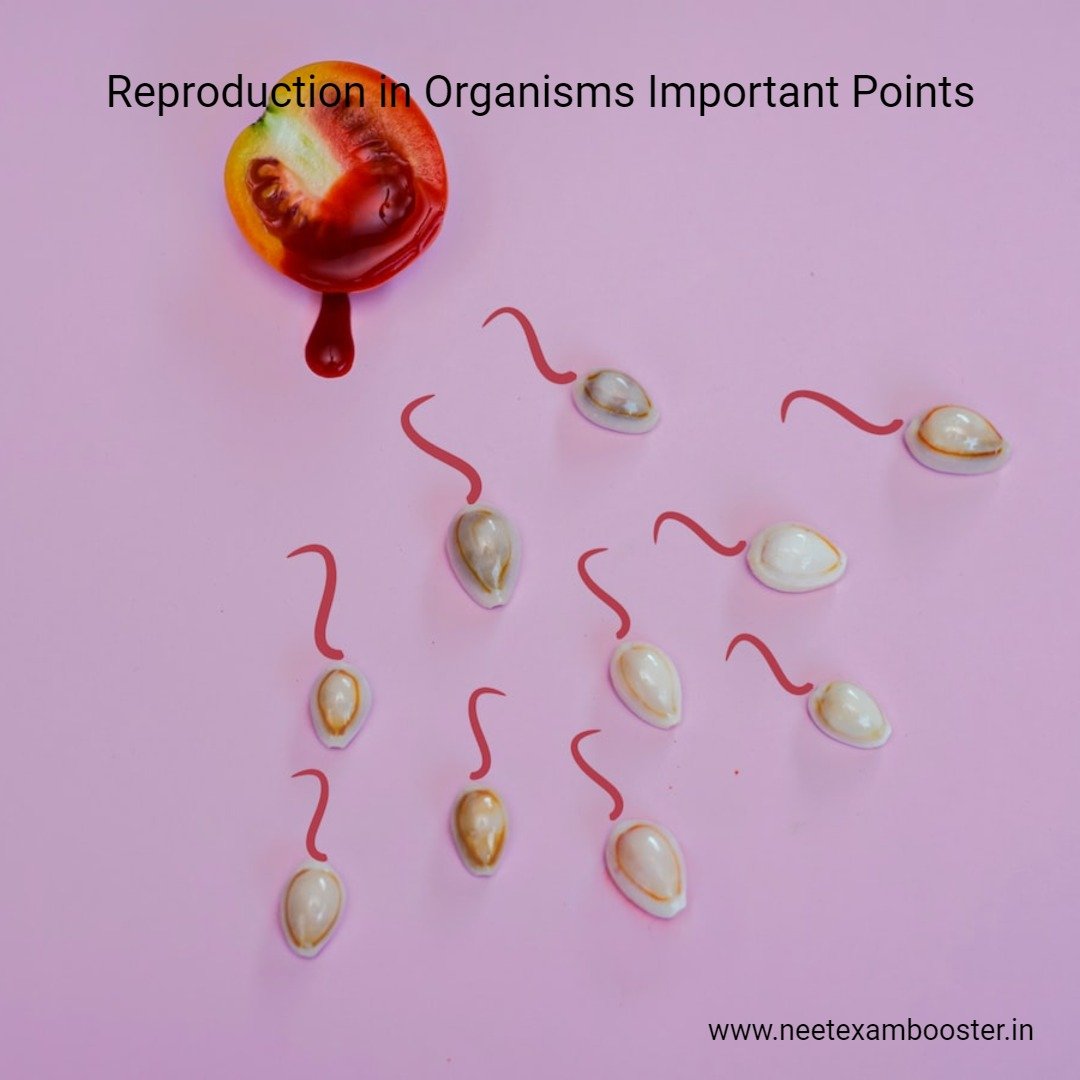Reproduction in organisms important points: Reproduction is a process of creating the offspring and passing on the genetic material to next generation. There are the two types of reproduction: asexual and sexual. Sexual reproduction involves fusion of the gametes from the two parents to create a offspring with unique genetic characteristics.
Male gamete is called as sperm, and female gamete is called as egg. In most of the sexually reproducing organisms, fertilization occurs internally, while in some of the species, fertilization occurs externally. Some of the species exhibits hermaphroditism.
Reproduction in organisms important points, Reproduction in organisms important points, Reproduction in organisms important points, Reproduction in organisms important points, Reproduction in organisms important points
25 important points of NCERT Biology Class 12 Chapter 1 – Reproduction in organisms Important Points
There are 25 important points on Reproduction in organisms important points:

1. Reproduction is a process by which organisms creates offspring, passing on their genetic material to next generation.
2. There are two kinds of reproduction: asexual and sexual.
3. Asexual reproduction involves creation of the offspring without fusion of the gametes (sex cells). This can occur through various mechanisms, such as budding, fragmentation, or vegetative propagation.
4. Sexual reproduction involves fusion of the gametes from two parents to create the offspring with the unique genetic characteristics.
5. Sexual reproduction allows for the genetic diversity, which can help a population to survive changing environmental conditions.
6. The gametes involved in sexual reproduction are produced through the process of meiosis, a type of cell division that results in cells with half number of chromosomes as the parent cell.
7. Male gametes are known as sperm, and female gametes are known as eggs (or ova).
8. In most of the sexually reproducing organisms, fertilization occurs internally, with sperm and egg uniting inside the female’s body.
9. In some of the species, however, fertilization occurs externally, with sperm and egg uniting outside the body of either of the parent.
10. Some of the species exhibits hermaphroditism, meaning they have both the male and female reproductive organs.
11. In mammals, male reproductive system includes testes, epididymis, vas deferens, seminal vesicles, prostate gland, and penis.
12. In mammals, the female reproductive system includes ovaries, fallopian tubes, uterus, cervix, and the vagina.
13. Ovaries are organs that produces eggs in females.
14. Fertilization typically occurs in fallopian tubes.
15. After the process of fertilization, the zygote undergoes multiple cell divisions to form an embryo.
16. In most of the mammals, embryo develops in the uterus.
17. During the period of pregnancy, developing fetus is nourished by placenta, which is attached to uterine wall and allows for exchange of the nutrients and waste between mother and fetus.
18. Pregnancy lasts for approximately 9 months in humans.
19. The process of childbirth, or parturition involves the contractions of uterus and the expulsion of the fetus through birth canal (vagina).
20. After the birth, the newborn receives nourishment from mother’s milk, which is produced by mammary glands.
21. In the plants, sexual reproduction can occur through fusion of the gametes produced by the flowers.
22. Flowers contain both the male and female reproductive structures, including stamen (male) and pistil (female).
23. Insects and the other animals often plays a role in pollination, transferring of the pollen from stamen to the pistil.
24. Once the pollen reaches ovules in the pistil, fertilization can occur and the seeds will begin to develop.
25. Some of the plants also reproduces asexually, through the mechanisms such as vegetative propagation or by producing the specialized structures like the bulbs or tubers.
Some Important Questions From Biology Class 11
| Chapter Name | Quiz Link |
| The Living World | Play Now |
| Biological Classification | Play Now |
| Plant Kingdom | Play Now |
| Animal Kingdom | Play Now |
| Morphology of flowering plants | Play Now |
| Anatomy of flowering plants | Play Now |
| Cell: the unit of life | Play Now |
| Biomolecules | Play Now |
| Cell Cycle and cell division | Play Now |
| Transport in Plants | Play Now |
| Structural organisation in Animals | Play Now |
| Mineral nutrition | Play Now |
| Photosynthesis in higher plants | Play Now |
| Respiration in plants | Play Now |
| Plant Growth and development | Play Now |
| Digestion and Absorption | Play Now |
| Breathing and Exchange of Gases | Play Now |
| Body fluids and circulation | Play Now |
| Excretory products and their elimination | Play Now |
| Locomotion and Movement | Play Now |
| Neural Control and Coordination | Play Now |
| Chemical Coordination and Integration | Play Now |
Some Important Questions From Biology Class 12
| Chapter Name | Quiz Link |
| Reproduction in organism | Play Now |
| Sexual reproduction in flowering plant | Play Now |
| Human reproduction | Play Now |
| Reproductive health | Play Now |
| Principles of inheritance and variation | Play Now |
| Molecular basis of inheritance | Play Now |
| Evolution | Play Now |
| Human health and disease | Play Now |
| Strategies for enhancement in food product | Play Now |
| Microbes in human welfare | Play Now |
| Biotechnology principles and processes | Play Now |
| Biotechnology and its application | Play Now |
| Organism and population | Play Now |
| Ecosystem | Play Now |
| Biodiversity and its conservation | Play Now |
| Environment issue | Play Now |



















